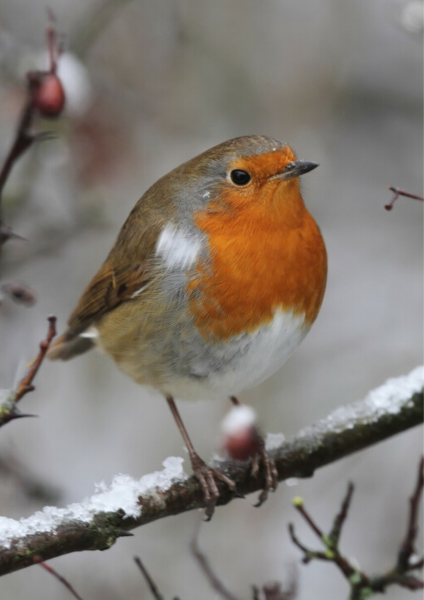Spotter's Guide - Autumn Birds
Starting to feel the chill? The colder months bring different migratory birds to the Forest. See how many you can identify on your autumn walks along with some of our resident species.
A common resident in the UK, the chaffinch can be found in the Forest in woodlands, hedgerows and fields where they feed on seeds. The male chaffinch has an intense red colouring across his face and breast, as well as a blue-grey crown and neck. The female chaffinch is more nondescript, with a browner colouration all over. Chaffinch can form flocks with migratory brambling in the Autumn, especially where beech mast is abundant.
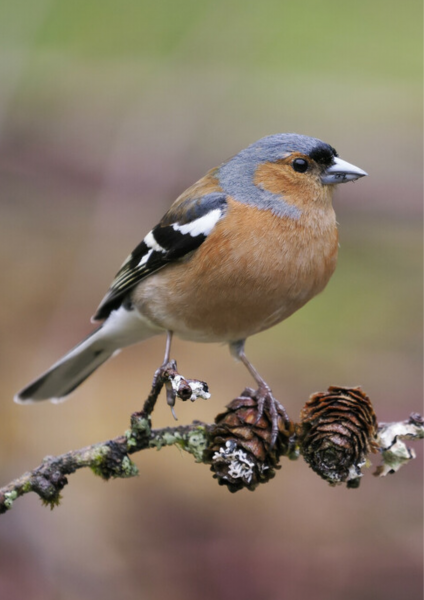
Often mistaken for its cousins, the mistle thrush and redwing, the fieldfare can be spotted in the countryside along hedgerows and in fields. Typically arriving in the Forest in October and flocking in groups of up to several hundred, the fieldfare is distinguishable by is speckled breast, grey-blue crown and chestnut brown back.

Visitors walking in the Forest during early mornings or late evenings throughout Autumn and Winter may have heard the iconic "Hooo Hoot" of the territorial male tawny owl. These nocturnal predators live up in the trees of our woodlands and feed on small mammals, amphibians, small birds and insects. Pellets (regurgitated fur and bone) can be seen on the ground at favoured perching spots.

The skylark can be seen in the open, grassy areas of the Forest. Their speckled cream and brown plumage keeps them camouflaged, so they may be difficult to see unless disturbed. Although you are less likely to hear their unmistakeable song in Autumn, their hovering flight and trilling calls still make them highly recognisable.
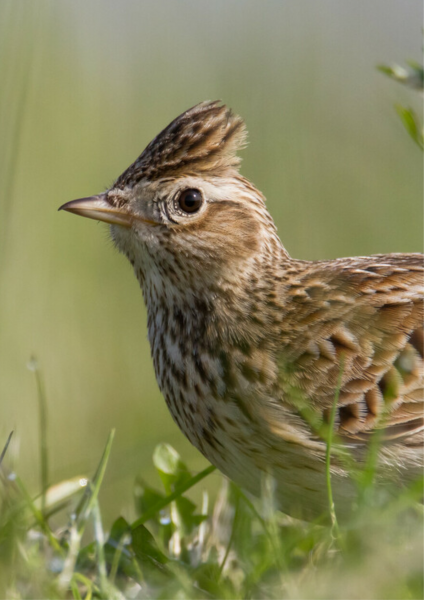
Europe's smallest bird and an absolutely adorable Autumn resident in the Forest, the goldcrest is most recognisable by the black and yellow stripe on its head. The male's stripe is more of a vibrant orange colour than in the female. Their thin, pointy beaks are perfect for picking insects, spiders and moth eggs out of pinecones. Look out for them in dense conifer woodlands and thick hedgerows.

The jackdaw is one of many corvids that live in the Forest. This small crow is easily identified by its black plumage, silver neck and bright white eyes. They can be spotted in the fields and woodlands, as well is public areas like parks and gardens. Jackdaws are social and intelligent birds and are known to 'talk' to each other, which can be quite noisy when they flock in large numbers.
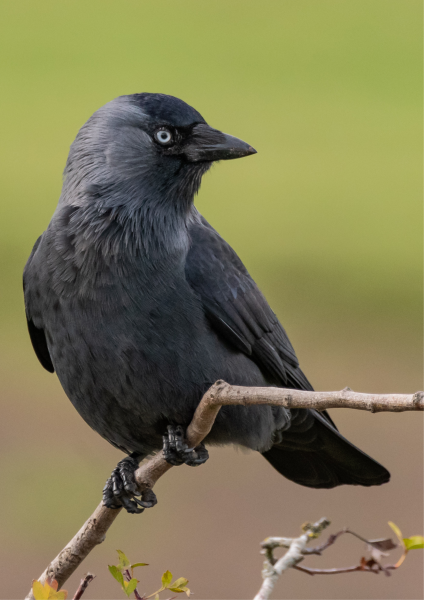
Wading through shallow ponds, reservoirs and riversides, the elegant grey heron hunts for small fish, mammals, birds and amphibians. Its long legs and neck are perfect for stepping gracefully through water. These large birds are fairly common and easy to identify, though when in flight are sometimes mistaken for birds of prey due to their size.
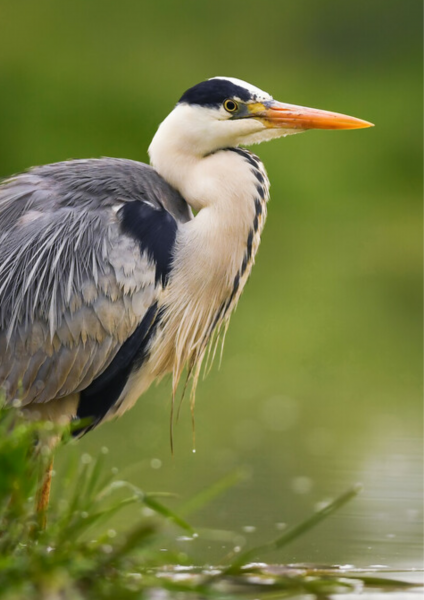
Known as the "gardener's friend" due to their tame and curious nature, the European robin is one of the UK's most iconic birds. Their most recognisable feature is the beautiful "red" breast that makes them easy to spot. The robin's large eyes are adapted to poor light, meaning they are often one of the first birds to wake up on cold, dark mornings. They can be found all over the Forest, in hedgerows and trees - listen out for their sweet, melodic song sung by both the males and females.
